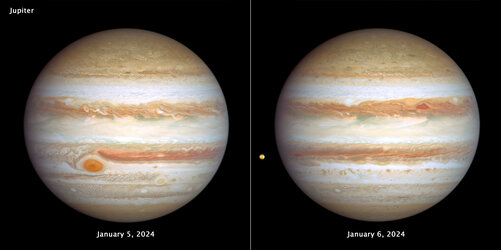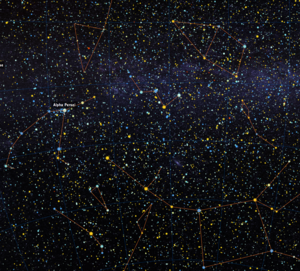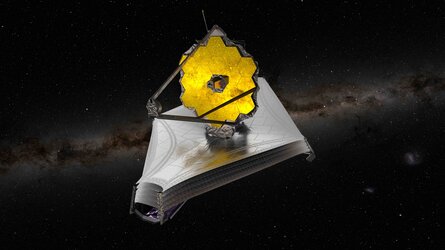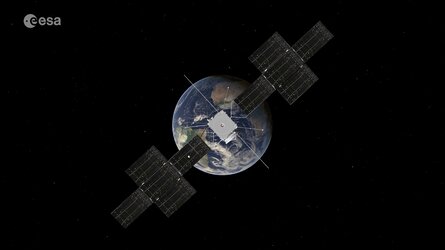Accept all cookies Accept only essential cookies See our Cookie Notice

About ESA
The European Space Agency (ESA) is Europe’s gateway to space. Its mission is to shape the development of Europe’s space capability and ensure that investment in space continues to deliver benefits to the citizens of Europe and the world.
Highlights
ESA - United space in Europe
This is ESA ESA facts Member States & Cooperating States Funding Director General Top management For Member State Delegations European vision European Space Policy ESA & EU Space Councils Responsibility & Sustainability Annual Report Calendar of meetings Corporate newsEstablishments & sites
ESA Headquarters ESA ESTEC ESA ESOC ESA ESRIN ESA EAC ESA ESAC Europe's Spaceport ESA ESEC ESA ECSAT Brussels Office Washington OfficeWorking with ESA
Business with ESA ESA Commercialisation Gateway Law at ESA Careers Cyber resilience at ESA IT at ESA Newsroom Partnerships Merchandising Licence Education Open Space Innovation Platform Integrity and Reporting Administrative Tribunal Health and SafetyMore about ESA
History ESA Historical Archives Exhibitions Publications Art & Culture ESA Merchandise Kids Diversity ESA Brand CentreLatest
Space in Member States
Find out more about space activities in our 23 Member States, and understand how ESA works together with their national agencies, institutions and organisations.
Science & Exploration
Exploring our Solar System and unlocking the secrets of the Universe
Go to topicAstronauts
Missions
Juice Euclid Webb Solar Orbiter BepiColombo Gaia ExoMars Cheops Exoplanet missions More missionsActivities
International Space Station Orion service module Gateway Concordia Caves & Pangaea BenefitsLatest
Space Safety
Protecting life and infrastructure on Earth and in orbit
Go to topicAsteroids
Asteroids and Planetary Defence Asteroid danger explained Flyeye telescope: asteroid detection Hera mission: asteroid deflection Near-Earth Object Coordination CentreSpace junk
About space debris Space debris by the numbers Space Environment Report In space refuelling, refurbishing and removingSafety from space
Clean Space ecodesign Zero Debris Technologies Space for Earth Supporting Sustainable DevelopmentLatest
Applications
Using space to benefit citizens and meet future challenges on Earth
Go to topicObserving the Earth
Observing the Earth Future EO Copernicus Meteorology Space for our climate Satellite missionsCommercialisation
ESA Commercialisation Gateway Open Space Innovation Platform Business Incubation ESA Space SolutionsLatest
Enabling & Support
Making space accessible and developing the technologies for the future
Go to topicBuilding missions
Space Engineering and Technology Test centre Laboratories Concurrent Design Facility Preparing for the future Shaping the Future Discovery and Preparation Advanced Concepts TeamSpace transportation
Space Transportation Ariane Vega Space Rider Future space transportation Boost! Europe's Spaceport Launches from Europe's Spaceport from 2012Latest

Close-up of Jupiter’s Great Red Spot (December 2023 to March 2024)
Thank you for liking
You have already liked this page, you can only like it once!
Astronomers have observed Jupiter’s legendary Great Red Spot (GRS), an anticyclone large enough to swallow Earth, for at least 150 years. But there are always new surprises – especially when the NASA/ESA Hubble Space Telescope takes a close-up look at it.
Hubble’s new observations of the famous red storm, collected over 90 days between December 2023 to March 2024, reveal that the GRS is not as stable as it might look. The recent data show the GRS jiggling like a bowl of gelatin. The combined Hubble images allowed astronomers to assemble a time-lapse movie of the squiggly behaviour of the GRS.
“While we knew its motion varies slightly in its longitude, we didn’t expect to see the size oscillate. As far as we know, it’s not been identified before,” said Amy Simon of NASA’s Goddard Space Flight Center in Greenbelt, Maryland. “This is really the first time we’ve had the proper imaging cadence of the GRS. With Hubble’s high resolution we can say that the GRS is definitively squeezing in and out at the same time as it moves faster and slower. That was very unexpected, and at present there are no hydrodynamic explanations."
Hubble monitors Jupiter and the other outer solar system planets every year through the Outer Planet Atmospheres Legacy program (OPAL) led by Simon, but these observations were from a program dedicated to the GRS. Understanding the mechanisms of the largest storms in the solar system puts the theory of hurricanes on Earth into a broader cosmic context, which might be applied to better understanding the meteorology on planets around other stars.
Simon’s team used Hubble to zoom in on the GRS for a detailed look at its size, shape, and any subtle colour changes. “When we look closely, we see a lot of things are changing from day to day,” said Simon. This includes ultraviolet-light observations showing that the distinct core of the storm gets brightest when the GRS is at its largest size in its oscillation cycle. This indicates less haze absorption in the upper atmosphere.
“As it accelerates and decelerates, the GRS is pushing against the windy jet streams to the north and south of it,” said co-investigator Mike Wong of the University of California at Berkeley. “It’s similar to a sandwich where the slices of bread are forced to bulge out when there’s too much filling in the middle.” Wong contrasted this to Neptune, where dark spots can drift wildly in latitude without strong jet streams to hold them in place. Jupiter’s Great Red Spot has been held at a southern latitude, trapped between the jet streams, for the extent of Earth-bound telescopic observations.
The team has continued watching the GRS shrink since the OPAL program began 10 years ago. They predict it will keep shrinking before taking on a stable, less-elongated, shape. “Right now it’s over-filling its latitude band relative to the wind field. Once it shrinks inside that band the winds will really be holding it in place,” said Simon. The team predicts that the GRS will probably stabilise in size, but for now Hubble only observed it for one oscillation cycle.
“This is a great example of the power of Hubble’s exquisite imaging for monitoring of the atmospheres of the outer planets,” said co-investigator Patrick Irwin of the University of Oxford. “With these new observations we were able to study the dynamics and evolution of the GRS over three months, building on our understanding of the long-term properties of Jupiter obtained from the OPAL program over the past decade.”
The researchers hope that in the future other high-resolution images from Hubble might identify other Jovian parameters that indicate the underlying cause of the oscillation.
[Image description: Eight Hubble images showing Jupiter’s Great Red Spot. The GRS appears as a bright red oval in the middle of cream-coloured cloud bands. The images trace changes in the GRS’s size, shape, brightness, colour, and twisting, over a period of 90 days between December 2023 and March 2024.]
-
CREDIT
NASA, ESA, A. Simon (GSFC) -
LICENCE
CC BY 4.0 INT or ESA Standard Licence
(content can be used under either licence)

Full disc of Jupiter (December 2023 to March 2024)

Hubble image of Jupiter (November 2022 and January 2023)

Hubble image of Jupiter (November 2022 and January 2…

Hubble tracks Jupiter's stormy weather















 Germany
Germany
 Austria
Austria
 Belgium
Belgium
 Denmark
Denmark
 Spain
Spain
 Estonia
Estonia
 Finland
Finland
 France
France
 Greece
Greece
 Hungary
Hungary
 Ireland
Ireland
 Italy
Italy
 Luxembourg
Luxembourg
 Norway
Norway
 The Netherlands
The Netherlands
 Poland
Poland
 Portugal
Portugal
 Czechia
Czechia
 Romania
Romania
 United Kingdom
United Kingdom
 Slovenia
Slovenia
 Sweden
Sweden
 Switzerland
Switzerland






















